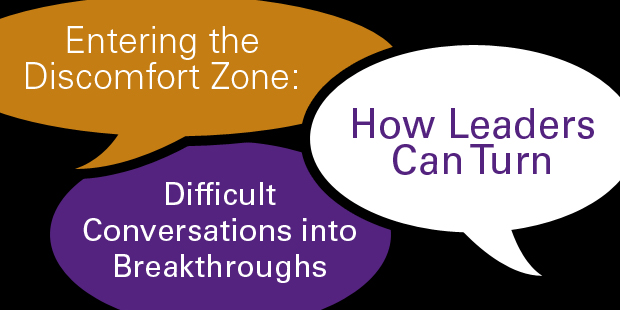
Entering the Discomfort Zone: How Leaders Can Turn Difficult Conversations into Breakthroughs
The best leaders make us feel unsure of ourselves.
They help us recognize that what we think is true, is not. Their reflections make us stop and think.
Then their questions break down our frames. They create these disruptions with courage, care, respect, and a firm belief in our highest potential. Although we are uncomfortable, this moment of uncertainty allows us to formulate a broader view of what we can do and who we can be.
Welcome to the Discomfort Zone.
The most memorable leaders make us recognize that in the moment we become unsure of who we are, learning happens. When we are not sure of who we are and what we should do, we are vulnerable enough to learn. The most memorable leaders know how to create and use the Discomfort Zone.
Dr. Marcia Reynolds recognized the most important ingredient for making a conversation transformational is listening beyond the spoken word. In her recent book The Discomfort Zone, she offers a model for using the moment when the mind is most open to learning to prompt people to think through problems, see situations more strategically, and transcend their limitations.
According to Reynolds, effective leaders often associate their ability to deeply listen with their capacity for accessing their intuition. The best coaches and leaders say they listen to their intuition while listening to others. We have intuition but we don’t consciously listen to it, especially when we are listening to what others are trying to tell us. The clues are between the lines, but we don’t notice.
The powerful questions that change people’s mind emerge when you listen to your intuition. You ask about what you sense—what fears, disappointment, needs, or desires are conveyed to you without words. They then stop, and question themselves.
>> Download a manifesto about The Discomfort Zone here.

Tags: Dr. Marcia Reynolds, Leadership, The Discomfort Zone, effective leaders, intuition












